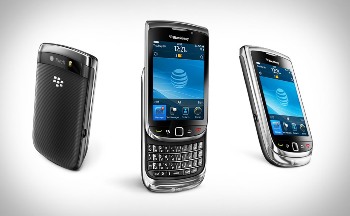BlackBerry Torch Is Better For Business Than iPhone: Review

Apple’s integrated combination of hardware and software is compelling, but can’t hold a candle to RIM’s business features, as seen in the BlackBerry Torch 9800
Enterprise deployment
The Torch has an undeniable advantage over the iPhone 4 in large-scale enterprise deployments, thanks to its ability to work with the extensively deployed BlackBerry Enterprise Server. We activated the Torch connected to our BES 5.0.2 server for Exchange, successfully pushing security and Wi-Fi configuration policies and accessing our protected file shares through the MDS channel.
Indeed, the Torch and BlackBerry 6 OS will work with both 4.x and 5.x BES iterations without requiring any server-side updates. However, mobile administrators will need to upgrade BES to 5.0.2 to support personal-liable devices when that capability is added to BlackBerry 6 OS later in 2010.
Although the iPhone offers a degree of remote configuration and management through its support for Microsoft’s Exchange ActiveSync, and Apple’s stand-alone iPhone Configuration Utility provides policy-based management for iOS devices, BES can be integrated with IBM Lotus Notes and Novell GroupWise environments as well as with Exchange.
Apple is looking to third parties such as MobileIron and Tangoe to provide the extensive management capabilities that RIM has offered for years through BES. In iOS 4, Apple unveiled a number of private Mobile Device Management APIs that these third parties can access to push policies, configurations and applications, and to monitor device health, status and usage. This new functionality will undoubtedly escalate enterprise interest in the iPhone, but it is worth noting that Apple seems to be keeping a tight rein on these APIs, so third-party feature sets may not be very distinct from one another. Although Apple may be catching up quickly, when it comes to managing a fleet of devices, BlackBerry still outpaces the upstart in this category.
Although Apple’s designers get a lot of praise for providing the company’s devices with an elegant appearance, lately we’ve noticed a lack of communication and coordination among the teams charged with accessories. Apple offers a range of accessories for the iPhone 4, including bumpers of various colours and a dock, but one of the first things P. J. found was that an iPhone 4 with bumper installed simply doesn’t fit into the iPhone 4 dock. This caused a bit of déjà vu, as P. J. observed earlier in 2010 that the iPad’s dock couldn’t be used with a tablet that’s encased in Apple’s microfiber cover.
At the close of our testing, we determined that the purported advantages or disadvantages of the devices’ respective antenna designs really didn’t make much difference in the field, but the distinct lead that the Torch has in policy and administration thanks to the BES infrastructure can’t be overcome for now, no matter how tightly Apple controls its ecosystem.